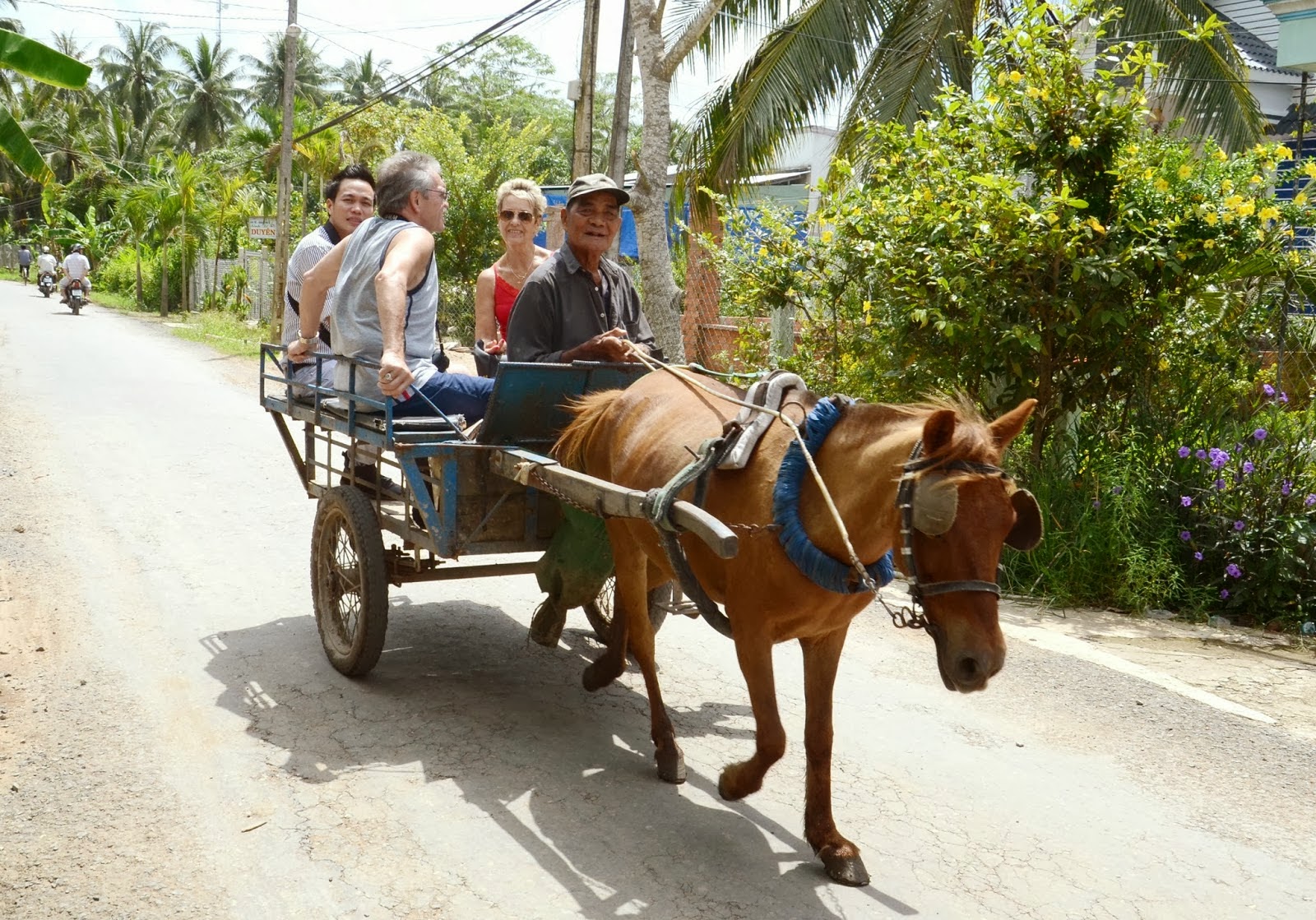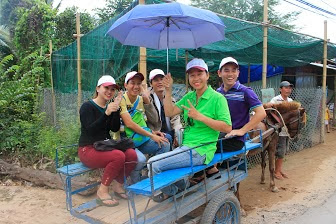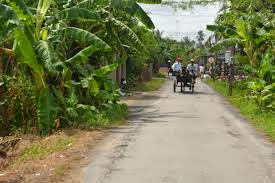The main road between Tan Thach and Quoi Son communes in Ben Tre
Province has been trod on by horses for the past 20 years.
As the only place in the country where one can still hear daily
clops (after the only racetrack Phu Tho in Ho Chi Minh City was closed in
2011), the horsecart route of two kilometers has become an intrinsic part of
the Mekong Delta tourism initerary.
They don’t look quite as fancy as those in Walt Disney fairy tales
with wooden wheels and wooden carriages that are driven by well-dressed
gentlemen.
Horsecarts in the province use rubber wheels to support an iron
carriage that is open to the sky, and drivers are chubby women who smile very
easily.
Nearly 50 horsecarts serve hundreds of visitors, mostly westerners
and some Japanese, every day. The tourists are brought here by travel
agents in Ho Chi Minh City more than 80 kilometers away and usually offered a boat
tour around many islets in the delta, or coconut candy factories, before the
horse ride.
The horse-riding route runs along Chau Thanh District, through
gardens of coconut palms that the province is also famous for.
The route has several potholes and crosses several bridges that
have no barriers, which the foreigners find special, but they still ask the
riders to step down and take the horses over the bridges slowly.
Locals say wooden carts were used a long time ago. They are more
beautiful, but also more expensive. A wooden cart would cost more than VND30
million (US$1,425), ten times the price of the ones that they are using
now.
One Sunday morning in early January, they gathered from 6 a.m.
onwards, although they said they usually receive their first customers a couple
hours later.
Pham Kim Kham, a single mother, had the opportunity that day to
serve a group of German tourists. “Five of them will fill the cart,” she said, refering to their
size, and quickly turned to greet her customers with cheerful hellos.
They ran nonstop until around 2 p.m. and Kham had nine rides, each
for VND25,000.
“I only made that since it’s Sunday. It’s very slow on normal
days,” she said.
As the horses rested, the owners set off to the fields to get
grass for them.
“Each horse prefers a different kind of grass and only its owner
knows which one it is,” Kham said.
She said she’s devoted to her horse as she and her son depend on
it to meet their daily life needs.
“There are a lot of customers during the Tet (Lunar New Year) season. I am
hoping to save money to paint the house’s walls.”
The biggest concern of those who ply this trade is choosing the
right horse.
One rider, Bui Huu Tai, 30, who has been in the business for more
than five years, said they prefer “normal ones” as racehorses are stronger but
more difficult to handle.
Mares are more suitable for the job as they are gentle and can be
tamed in one month, but they easily fall sick and sometimes have to take
maternity leave, Tai said.
Stallions are strong but it’s hard to keep them in the line.
“Sometimes they run by a mare and pull the whole cart towards the
mare,” he said.
The biggest crisis happens if the horse dies or sickness or in an
accident.
Tai said a dead horse is only bought at VND4-5 million, about a
fifth of the price they paid for the animal. They buy most horses from Long An
Province.
Tran Kim Chan, Kham’s mother, said horses are more sensitive to
the climate than people and fall sick anytime it’s a bit too cold or hot.
“Anytime we sense changes in the weather, we will have to give
them medicine in advance.”
This family has been involved with horsecarts for generations.
Kham said the job was passed down from the father of her great
grandfather, long before it became a tourist attraction.
Her grandfather Tran Kim Hong was known as the horse riding
“tycoon” in the area, and was the first one to use it for tourism
purposes.
Hong’s father rode horses from the early 1940s, and he started to
travel along from second grade, dropping out after fifth grade to help with the
business.
Hong can recognize if a horse is good or bad, or has been sick
just by looking at one.
“A horse hoof is normally smooth, but after the animal is sick one
time, it will look concaved. A fierce horse folds its ears and stirs its eyes
when approached by strangers, while a horse that kicks tends to swings its tail
at strangers.”
His experience tells him to choose a young one without those
symptoms.
“I won’t take even a cheap offer if it is naughty.”
He was born in the Year of the Horse 72 years ago, but “I don’t
want to leave the job yet,” he said.
With him out of action with a broken arm, 15 members of the family
including his children and grandchildren are riding 13 horse carts.
Kham, 30, mastered the job early, but also started riding one for
living from age 24 when she got married.
“But after a year, my husband probably could not stand the
business anymore and he left me just when I was pregnant, and took with him
everything (including the horse and the cart for sale),” she told Tuoi Tre.
She borrowed money to start anew.
Although their business is labeled an international service, the
locals said it doesn’t pay quite well.
They were paid VND20,000 (around one US dollar) for a horse ride,
and in 2009 asked the travel agents to raise it.
The payment is now VND25,000 a ride.
That doesn’t leave them much at the end of the day, as a horse
eats VND50,000 worth of rice and grass a day.
“On a lucky day when I get four rides, I’d have VND50,000 left,”
Hong said.
But he also said it at least guarantees income and saves them from
the panicking about daily meals.
“If I run out of rice today, I just need to ride tomorrow to have
some money. That’s why we don’t take a break even on the first day of Tet.”
Chan said payment for the job has changed little compared to the
increasing rate of prices and wages in other jobs.
“When a horse ride cost VND20,000, a kilo of rice was nearly
VND4,000. Now a kilo of rice is more than VND7,000 and a ride has been just
VND25,000 for years.”
Chan said the horse ride price has remained the same from when a
construction worker was paid VND50,000 a day. Now they get VND140,000, but a
proportionate increase in the wages of horsecart riders does not seem to be on
the cards.







.jpg)

.jpg)

0 nhận xét: